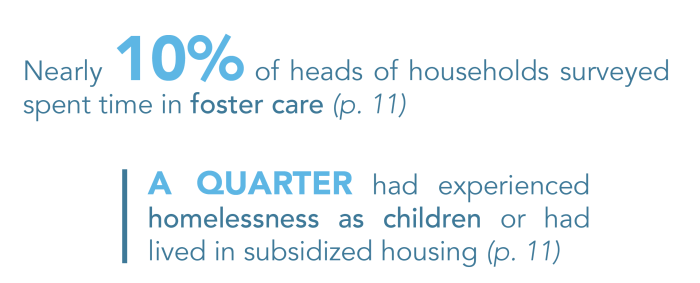“If the providers understand the family’s perspective on things, they
are better able to help, are more sympathetic, and the family’s needs
can be better met.”— Homes for Families Consumer Advocacy Team (CAT) Member, 2017
In September of 2017, HFF released a full report on Family Experiences of Homelessness in Massachusetts. We are continuing to explore and build off of the survey data used in that report, and one way we are doing this is with this blog series, a continuation of the “Putting Survey Data Into Practice” document released in January. The series incorporates the perspectives of families and providers in relation to key data points, and works towards solutions for families and family-centered care.
Stay tuned every Monday in April at 10am for a new (coffee break) installment of this blog series!
Housing & Homelessness History
Important points from the survey results (page numbers correspond to the full report):

We wanted to hear from families! What would be some of the best approaches to address trends in housing and homelessness history for families experiencing homelessness? The HFF Consumer Advocacy Team (CATs) shared their reflections, summarized here:
Where do we need to focus our attention to prevent homelessness and better understand multi-generational cycles?
- Focus on families that are struggling with domestic violence (DV).
- Improve access to the necessities for housing stability and economic stability (affordable housing; access to jobs; access to child care; education, etc.).
- Effective and sustained stabilization services are essential to prevent homelessness, as well as to prevent multi-generational cycles of housing instability and homelessness. This should include supports for emotional and medical stability.
- Stabilization, stabilization, stabilization!

This post authored by I.W. & N.M.

